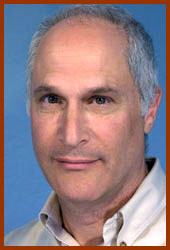Psychotherapy & Psychopharmaacology
| |
| home |
| background |
| appointments |
| therapy |
| medication |
| location |
| Publications |
Books: Budimu mBupita Buanga: Bansonsolodi; Budimu mBupita Buanga: Baleleshi; Prevenir Vaut Mieux Que Guerir. M. Barad and Kelsey Martin, Catholic Press, Kananga, Zaire, 1982. These are three training and reference manuals for an integrated public health program Dr. Martin and I initiated in a rural zone of 100,000 people as Peace Corps volunteers in Zaire (now the Democratic Republic of Congo). The Tshiluba versions are for the use of village childcare workers and midwives, respectively. The consolidation of the two, in French, is for the use of rural nurses and for training programs elsewhere in the DRC. Kirmayer, L., Lemelson, R. and Barad, M. (eds.) Understanding Trauma: Integrating biological, Clinical, and Cultural Perspectives, Cambridge Univ. Press, Cambridge, 2007, 500 pages. Research articles: Ames, A., III, Walseth, T.F., Heyman, R.A. Barad, M ., Graeff, R. M., and Goldberg, N.D. Light-induced increases in cGMP metabolic flux correspond with electrical responses of photoreceptors. J. Biol. Chem. 261: 13034-13042; 1986. Ames, A., III and Barad, M . Metabolic flux of cyclic GMP and phototransduction in rabbit retina. J. Physiol. 406: 163-170; 1988. Barad, M ., Jack, T., Chadwick, R., and McGinnis, W. A novel, tissue-specific, Drosophila homeobox gene. EMBO J. 7: 2151-2161; 1988. Barad, M. , Erlebacher, A., and McGinnis, W. Despite expression in embryonic visceral mesoderm, H2.0 is not essential for Drosophila visceral muscle morphogenesis. Developmental Genetics 12: 206-211; 1991. Abel, T., Nguyen, P.V., Barad, M. , Deuel, T.A.S., Kandel, E.R., and Bourtchuladze, R. Genetic demonstration of a role for PKA in the late phase of LTP and in hippocampus-based long-term memory. Cell 88: 615-626; 1997. Martin, K.C., Michael, D., Rose, J.C., Barad, M ., Casadio, A., Zhu, H., and Kandel, E.R. MAP kinase translocates into the nucleus of the presynaptic cell and is required for long term facilitation in Aplysia . Neuron, 18: 899-912; 1997. Barad, M ., Bourtchuladze, R., Winder, D.G., Golan, H. and Kandel, E.R. Rolipram, a type IV-specific phosphodiesterase inhibitor, facilitates establishment of long-lasting long-term potentiation and improves memory. Proc. Natl. Acad. Sci. USA, 95: 15020-15025; 1998. Bach, M. E., Barad, M. , Son, H., Zhuo, M., Lu, Y.-F., Shih, R., Mansuy, I., Hawkins, R. D., and Kandel, E. R. Age-related defects in spatial memory are correlated with defects in the late phase of hippocampal long-term potentiation in vitro and are attenuated by drugs that enhance the cAMP signaling pathway. Proc Natl Acad Sci U S A. 96: 5280-5; 1999. Cain, C.K., Blouin, A.M., and Barad, M. L-type voltage-gated calcium channels are required for extinction, but not acquisition or expression, of conditional fear in mice. Journal of Neuroscience, 15: 9113-21; 2002. Moccia, R., Chen, D., Lyles, V., Kapuya, E., E, Y., Kalachikov, S., Spahn, C.M.T., Frank, J., Kandel, E.R., Barad, M. and Martin, K.C. An unbiased cDNA library prepared from isolated Aplysia sensory neuron processes is enriched for cytoskeletal and translational mRNAs. Journal of Neuroscienc, 23: 9409-17; 2003. Cain, C.K., Blouin, A.M. and Barad, M. Temporally massed CS presentations generate more fear extinction than spaced presentations. Journal of Experimental Psychology: Animal Behavior Processes, 29: 323-333; 2003. Cain, C.K., Blouin, A.M. and Barad, M. Adrenergic transmission facilitates extinction of conditional fear in mice. Learning & Memory, 11: 179-187; 2004. Barad, M., Blouin, A.M. and Cain, C.K. Like extinction, latent inhibition of conditioned fear in mice is blocked by systemic inhibition of L-type voltage-gated calcium channels. Learning and Memory, 11: 536-539; 2004. Cain, C.K., Godsil, B., Jami, S. and Barad, M. The L-type calcium channel blocker nifedipine impairs extinction, but not reduced contingency effects in mice. Learning and Memory, 12: 277-284; 2005. Ponnusamy, R., Nissim, H.A. and Barad, M. Systemic blockade of D2-like dopamine receptors facilitates extinction of conditioned fear in mice. Learning and Memory, 12: 299-406; 2005. Bredy, T.W., Wu, H., Crego, C., Zellhoefer, J., Sun, Y. E., and Barad, M., Histone modifications around individual BDNF gene promoters in prefrontal cortex are associated with extinction of conditioned fear. Learning and Memory 14: 268-276; 2007. Bredy, T.W. and Barad, M., The histone deacetylase inhibitor valproic acid enhances acquisition, extinction, and reconsolidation of conditioned fear. Learning and Memory 15: 39-45; 2008 Reviews: Martin, K.C., Barad, M., and Kandel, E.R. Local protein synthesis and its role in synapse-specific plasticity. Curr. Opin. Neurobiol., 10: 587-592; 2000. Barad, M. Later developments: Molecular keys to age-related memory loss. Alzheimer Disease and Associated Disorders, 17: 168-176; 2003. Barad, M. Fear extinction in rodents: Basic science to clinical promise. Current Opinion in Neurobiology 15: 710-715; 2005. Barad, M. and Saxena, S. Neurobiology of extinction: A mechanism underlying behavior therapy of human anxiety disorders. Primary Psychiatry 12: 45-51; 2005. Barad, M. Is extinction of fear erasure or inhibition? Why both, of course. Learning and Memory, 13: 108-109; 2006. Barad, M. , Gean, P.-W., and Lutz, B. The role of the amygdala in the extinction of conditioned fear. Barad, M. Divide and conquer: An L-type voltage-gated calcium channel subtype finds a role in conditioned fear. Learning and Memor, 13: 584-9; 2006. Davis, M., Barad, M. , Otto, M., and Southwick, S. Combining pharmacology with cognitive behavioral therapy: Traditional and New Approaches. J. Traumatic Stress, 19: 571-581; 2006. Chapters: Barad, M. Anatomical, Molecular, and Cellular Substrates of Fear Extinction, in Fear and Learning : From Basic Processes to Clinical Implications (Eds. M. G. Craske, D. Hermans, and D. Vansteenwegen), 2006, American Psychological Association, Wash, D.C pp. 157-174. Barad, M. and Cain, C.K. Mechanisms of Fear Extinction: Toward Improved Treatment for Anxiety in Understanding Trauma: Integrating biological, Clinical, and Cultural Perspectives (Kirmayer, L., Lemelson, R. and Barad, M.), Cambridge Univ. Press, Cambridge, 2007, pp. 78-97. |
|
